Building an adaptive tool for mapping habitat and species to support the Great Lakes coregonine conservation and restoration framework
Contributing Authors
Cory Brant (USGS, cbrant@usgs.gov), David Bunnell (USGS), Charles Bronte (USFWS), Jason Smith (Sault Ste Marie Tribe of Chippewa Indians), Matthew Herbert (TNC), David Bennion (USGS), Amanda Ackiss (USGS), Andrew Honsey (USGS), Michael Slattery (USGS), Sofia Dabrowski (USGS), Tara Bell (USGS), Wendylee Stott (DFO), Tammy Patterson (USGS), Joseph Schmitt (USGS), Chris Castiglione (USFWS), Ralph Tingley (USGS)
Project Description
Coregonines have declined substantially over the past century throughout the Great Lakes. A basin-wide framework, adopted by the Council of Lake Committees, has been developed to conserve and restore these ecologically and economically important native fishes. We are requesting support to continue work on a key objective for this conservation challenge—to build a geospatial database for describing and mapping populations and habitats of historic and contemporary coregonines. A substantial amount of historic information regarding coregonine distributions and habitats exists, yet much of it remains inaccessible for mapping or other analyses. Understanding historic habitat use and distributions is essential not only for the mapping team of the basin-wide template, but also to resolve and delineate coregonine taxonomy, illustrate where critical habitat once existed and where losses have occurred, and to target contemporary restoration areas (habitat, refugia, additional threats). Objectives proposed here provide the groundwork for the identification and organization of critical information necessary for the success of the basin-wide framework.
Historical coregonine spawning, nursery, and general occurrence point locations in the Great Lakes of North America and their tributaries
